When people reflect on their school experiences with mathematics, it’s hard to miss those eye rolls followed by sheer horror expressions. However, amidst the groans, there are also tales of joy and excitement from those who found math genuinely enjoyable.
No matter which side you’re on, there’s no denying that numbers can be pretty dull — unless, of course, you add a dash of humor to it. In this piece, we’ve assembled a collection of nerdy math memes to prove the theory and bring some laughs to your calculations.
#1 It Must Be the Brain Fog
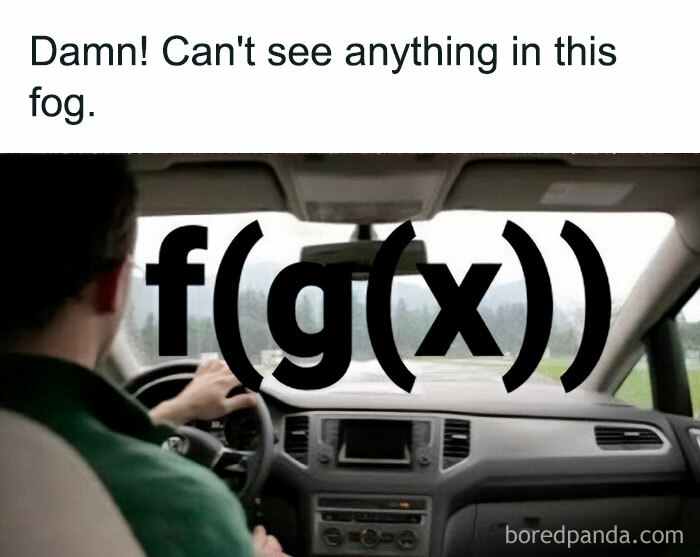
#2 My Answer Still Stands
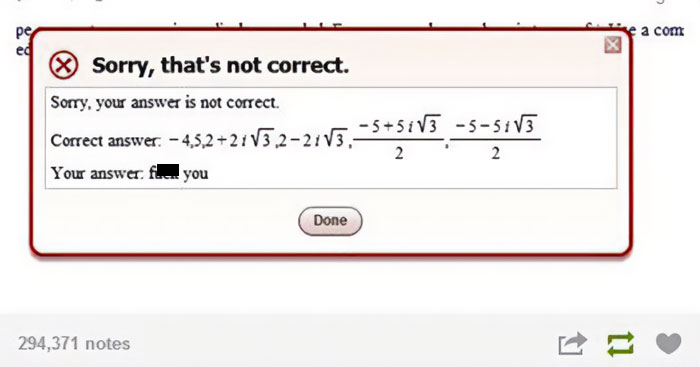
#3 “You Guys Get Numbers?”
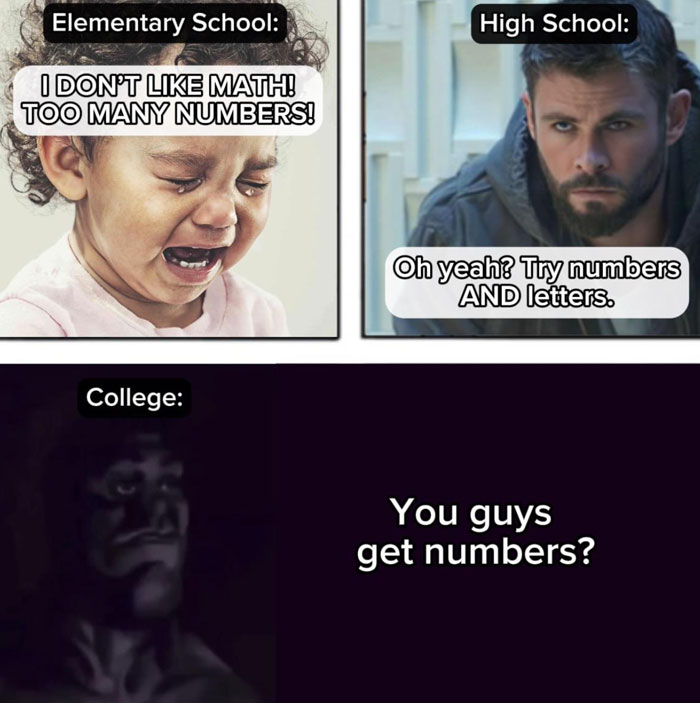
Image credits: grantwisler
A Brief History Of Mathematics
The origins of mathematics are humble. Thousands of years ago, it began as a way for humans to measure and count, primarily in agriculture and trade. As the understanding of math grew, so did the endless possibilities it brought.
The earliest known artifact that presumably shows the earliest recorder calculations is the Ishango Bone (Mathigon) (1). Discovered in 1950 in the Democratic Republic of Congo, the artifact dates back over 20,000 years to the Stone Age.
The bone is just under four inches long and contains multiple indentations. Scientists believe these indentations are evidence of counting. Interestingly, some experts suspect that the grouping of the indentations exhibits a primitive understanding of decimals and prime numbers.
The Sumerians of Mesopotamia were likely the ones who developed the way we measure time around 4000 BCE. They used a base-60 number system, which is why we have 60 seconds in a minute and 60 minutes in an hour. According to History, this base-60 system also explains why a circle is divided into 360 degrees (2).
#4 “So Glad I Used a Calculator”
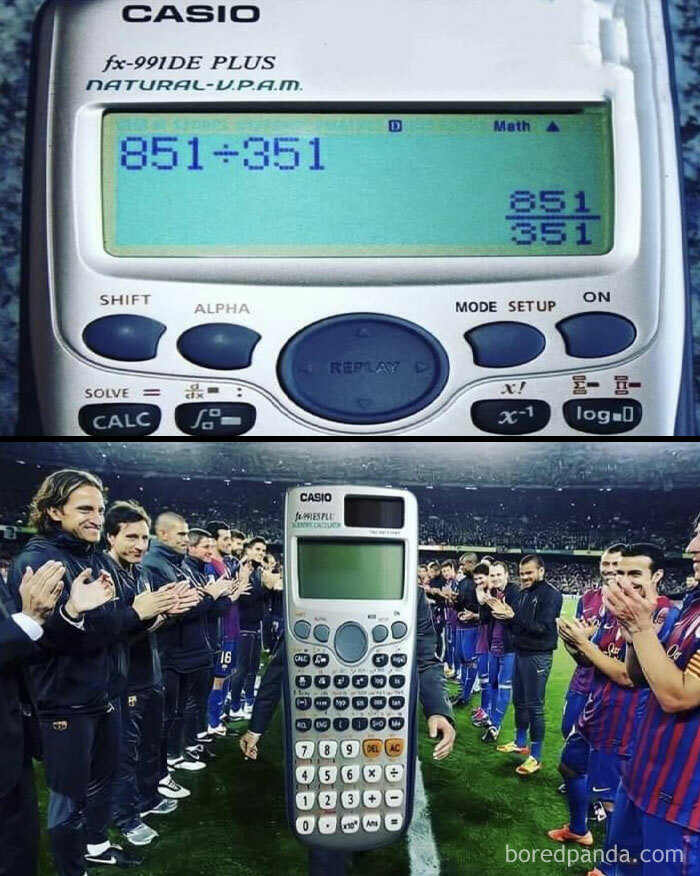
Image credits: usman_pk
#5 “Not To Go Off On a Tangent, but…”

Mathematical Advancements from Ancient Civilizations to Modern Times
Building on the Sumerians’ knowledge, The Babylonians of Mesopotamia developed one of the first examples of a set of symbols for counting. They also had some understanding of Pythagoras’ Theorem over 1000 years before Pythagoras himself introduced it.
The Ancient Egyptians also left some detailed evidence of their mathematical skills. Built around 1420 BCE, The Tomb of Menna depicts different methods for measuring and calculating.
Meanwhile, the Ancient Greeks produced some of the most well-known ancient mathematicians, from Pythagoras and Plato to Euclid and Archimedes. These great thinkers helped evolve the areas of geometry, algebra, calculus, and many others.
The digits 0 through 9, as we know them today, first appeared in India around the 6th or 7th centuries. Around the 12th century, two Middle Eastern mathematicians, al-Khwarizmi and al-Kindī, introduced these digits to Europe (Brittanica) (3).
From this point onward, concepts such as geometry, calculus, statistics, engineering, and algebra became more prominent across mathematics. Math also became increasingly linked to other areas of study, such as science, medicine, and astronomy. Since math is constantly evolving, exciting findings and developments continue to this day.
#6 Heart-Stopping Math Problems

#7 “I Don’t Need Your O(pi)nion”
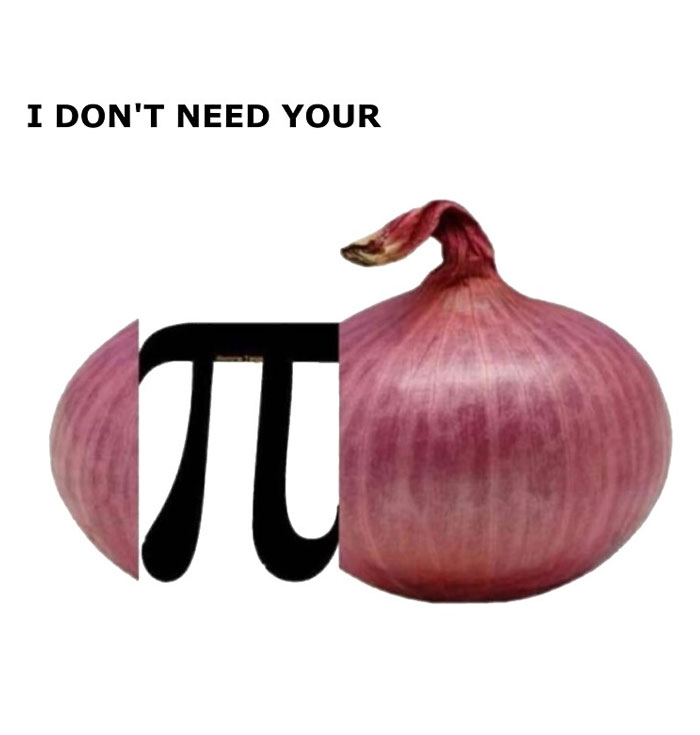
Ada Lovelace: The Visionary Who Pioneered Modern Programming
Ada Lovelace is often referred to as the first computer programmer. She was born in England in 1815. Her father was Lord Byron, the renowned author and poet. An uncommon choice for a woman at the time, her mother encouraged her to study math and science (Brittanica) (4).
Following her studies, Lovece worked alongside the “father of the computer,” Charles Babbage. While Babbage saw computers as mere calculation tools, Lovelace predicted their wide, everyday usage. She also invented the foundation for looping codes, which are still found in modern computer programs (BBC Newsround) (5).
Ada’s vast contributions to mathematics and computer science were generally disregarded until many years after her death. In the late 1970s, the US Department of Defense named a computer language “Ada” in her honor (History) (6).
#8 Top Tip
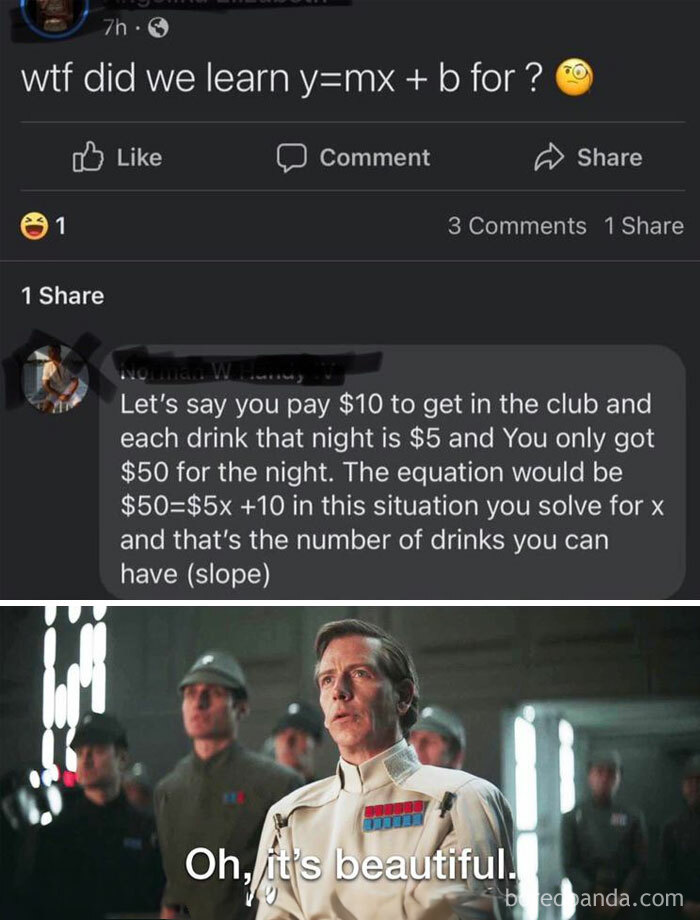
Image credits: _S43D_
#9 “Me in Every Maths Test”
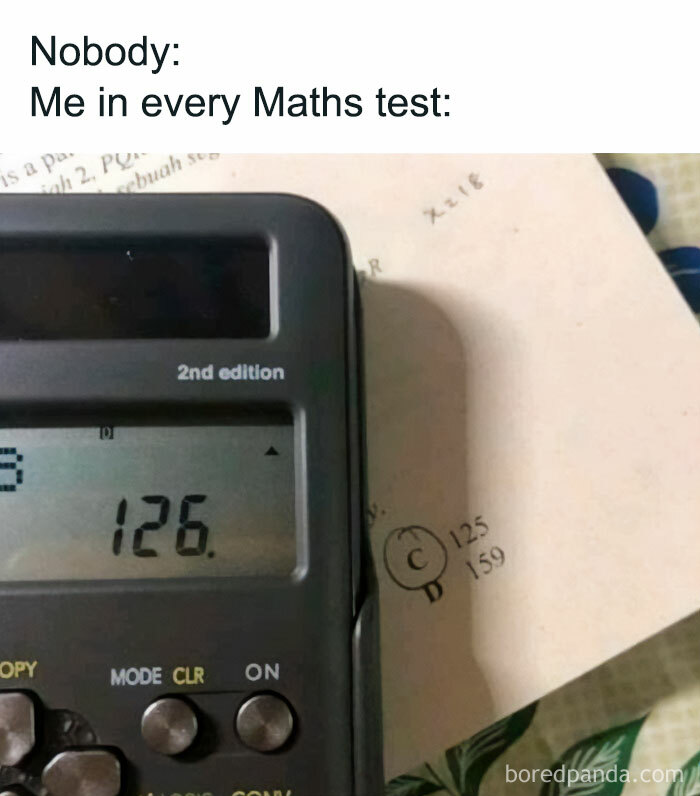
Image credits: arghyanicmemes
Albert Einstein: The Physicist Whose Equations Shaped Modern Science and History
Albert Einstein was born in Germany in 1879. He was a physicist who used math in his work. He is best known for his theory of relativity, which explains how gravity affects space and time (Space.com) (7).
Curiously, many mistakenly credit Einstein with directly helping to build the first atomic bomb during World War II. While he didn’t work on the bomb’s creation, he did encourage the United States to pursue its development. Moreover, his famous equation, E=mc², laid the theoretical groundwork that made the bomb possible (History) (8).
#10 An English Equation
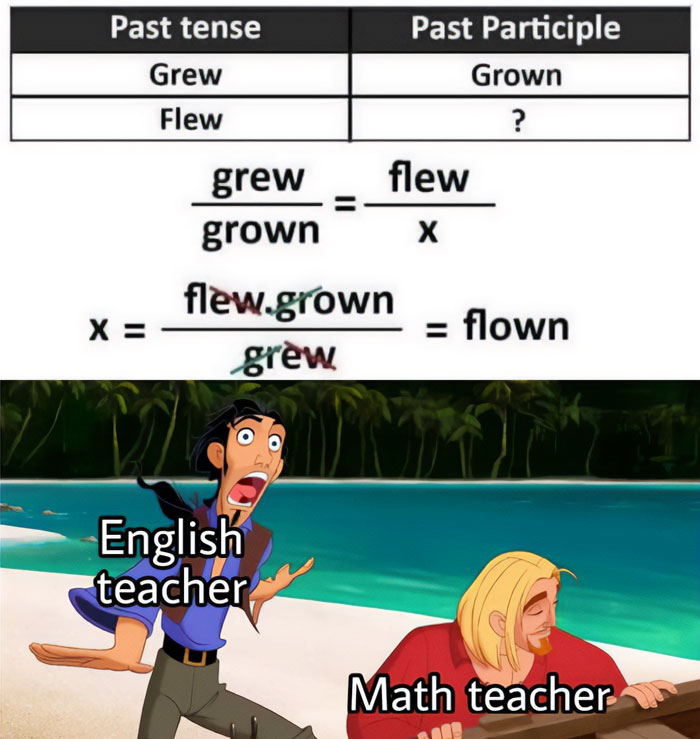
Image credits: JerrysMindblowers
#11 “You Will Not Always Have a Calculator with Y –”
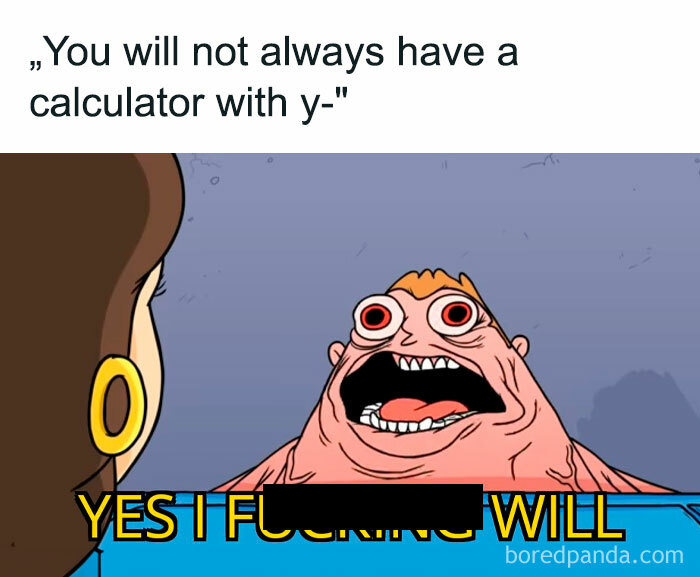
Image credits: General-Resist-310
Alan Turing: Codebreaker, Father of Computer Science, and AI Visionary
Alan Turing, often called the “father of computer science,” was born in London in 1912. From a very young age, Turing showed an aptitude for math and science.
Turing’s work is recognized for his role at Bletchley Park, where he broke the German Enigma Code. His work saved millions of lives and helped the Allies win World War Two (Brittanica) (9).
In 1950, Turing invented the Turing Test. The test evaluated whether artificial intelligence could “think” like a human (Brittanica) (10). It is still considered a benchmark for AI testing AI. Interestingly, the latest AI model, ChatGPT, has recently passed the Turing Test (Stanford School of Humanities and Sciences, 2024) (11).
Despite his brilliance during the war effort, Turing faced prosecution and imprisonment for homosexuality in 1952. He took his own life two years later. In 2013, he received a posthumous pardon from Queen Elizabeth II (Gov.uk) (12).
Alan Turing’s life and lasting impact are beautifully depicted in the acclaimed film The Imitation Game (2014). Additionally, his portrait graces the British £50 note, honoring his significant contributions.
#12 “Just Do the Math”
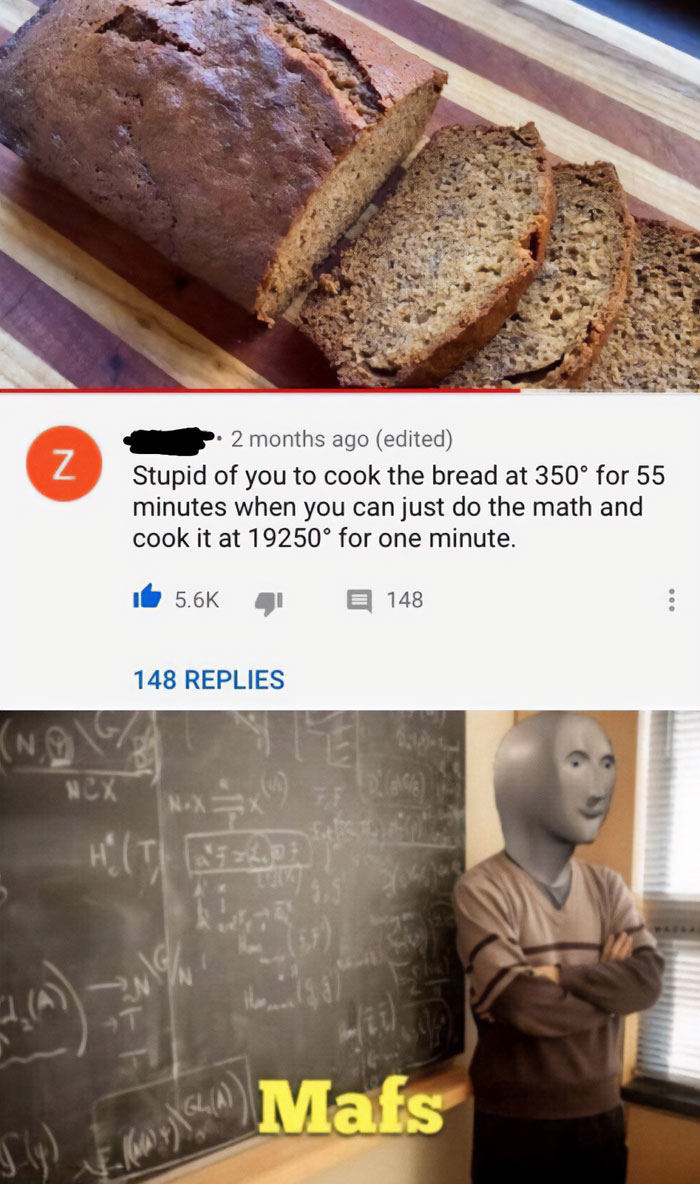
Image credits: onepieceeee
#13 Hope vs Fear

Katherine Johnson: Mathematician Who Helped Win the Space Race
Katherine Johnson was one of four talented African American women working for NASA in the 1950s-60s. As a physicist, space scientist, and mathematician, she calculated the orbits of US astronauts, often enduring racial and gender stereotypes (History) (13).
Johnson is best known for calculating John Glenn’s orbit of Earth. In fact, Glenn asked Johnson to personally double-check the computer’s calculations for his orbit. She also helped calculate the trajectory of Apollo 11’s moon landing in 1969.
Her mathematical calculations helped America win the Space Race against the Soviet Union (Space.com) (14). In 2015, former US President Obama honored Johnson with the Presidential Medal of Freedom. Her remarkable life and contributions at NASA inspired the 2016 film Hidden Figures.
#14 Math Problems Feel Different
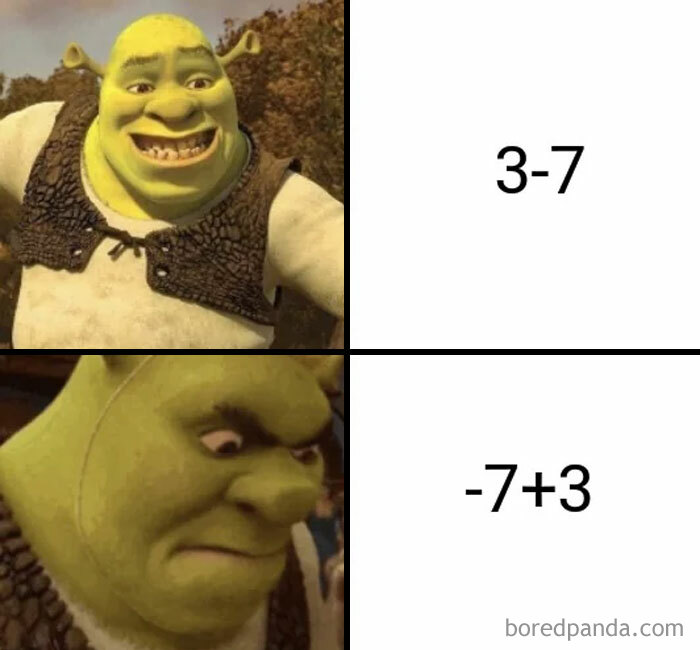
Image credits: reddit.com
#15 “When the Stakes for Passing Your Math Exam Keep Getting Higher”

Image credits: reddit.com
The Beauty in Mathematics
While math is often seen as a field dominated by calculations and theories, it also reveals some surprisingly beautiful patterns. Take the Fibonacci sequence, introduced by a 13th-century Italian mathematician. This sequence consists of integers where each number is the sum of the two preceding ones.
It starts as 0, 1, 1, 2, 3, 5, 8, 13, 21, 34, 55, 89, 144, 233, and continues. What’s truly fascinating is how prevalent the Fibonacci sequence is in nature. For instance, many flowers have several petals that align with this sequence (Scott and Marketos, 2014) (15).
For instance, irises have three petals, buttercups have five, cosmos have eight, and ragworts have 13. Next time you have a bouquet, count the petals and see if the amount matches.
Another mathematical expression seen in nature is the hexagonal honeycomb produced by honeybees. While there is still some discussion about how they make the distinctive shape, the pattern of their combs has captivated many throughout history.
Some artists, including Leonardo da Vinci and M.C. Escher, include elements of math in their art. Da Vinci effectively used lines and a vanishing point to give his artwork the impression of being three-dimensional on a flat surface (The Conversation) (16). Escher employed symmetry and pattern to develop tessellations.
Modern-day artists also use math to create masterpieces. Interestingly, The Bridges Organization holds an annual conference and exhibition that showcases the mathematical connection to the arts (17).
#16 “Destroy the Math”
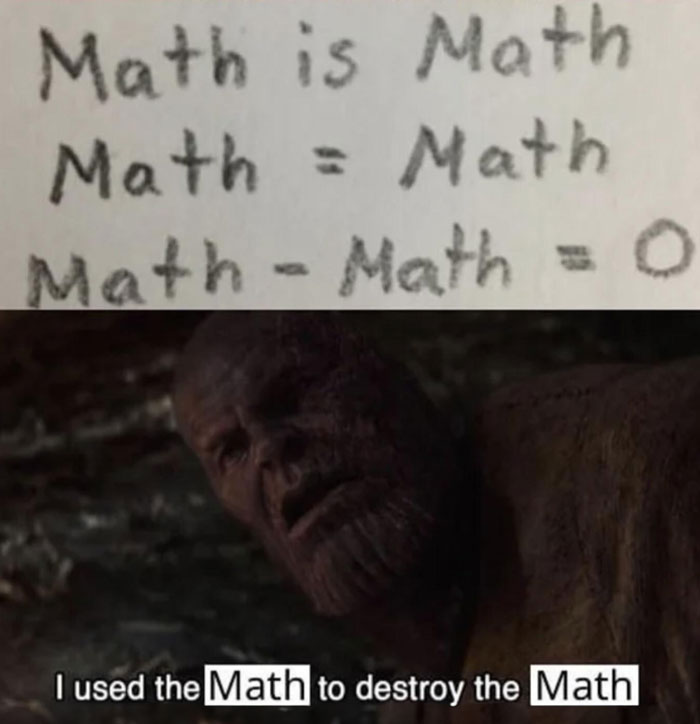
#17 “There Are 17 Pineapples and 23 Bananas…”
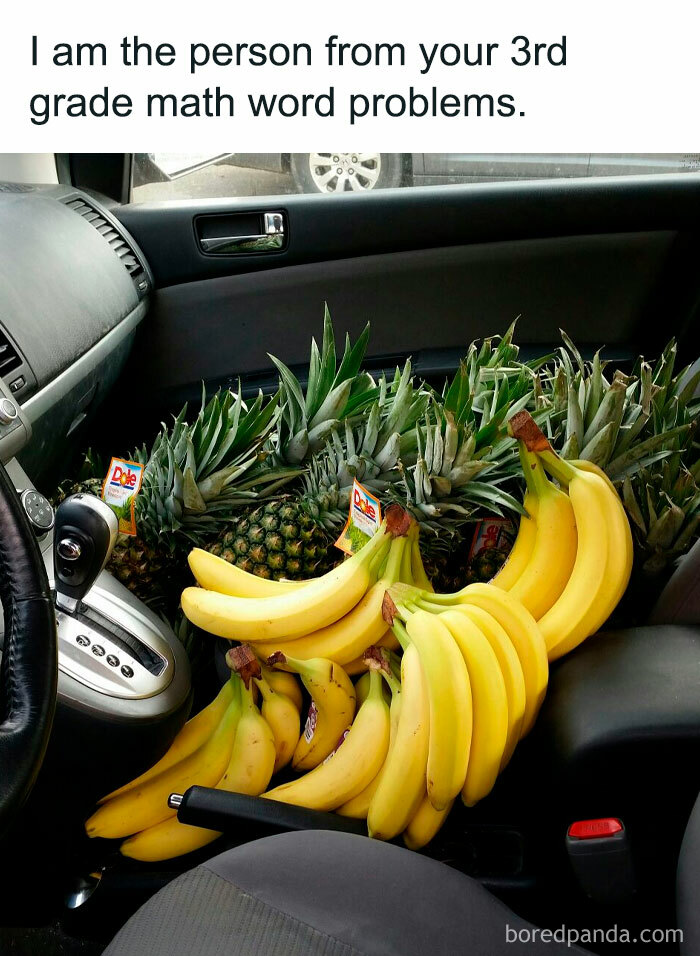
Image credits: imgur.com
#18 Elementary Math Hit Hard
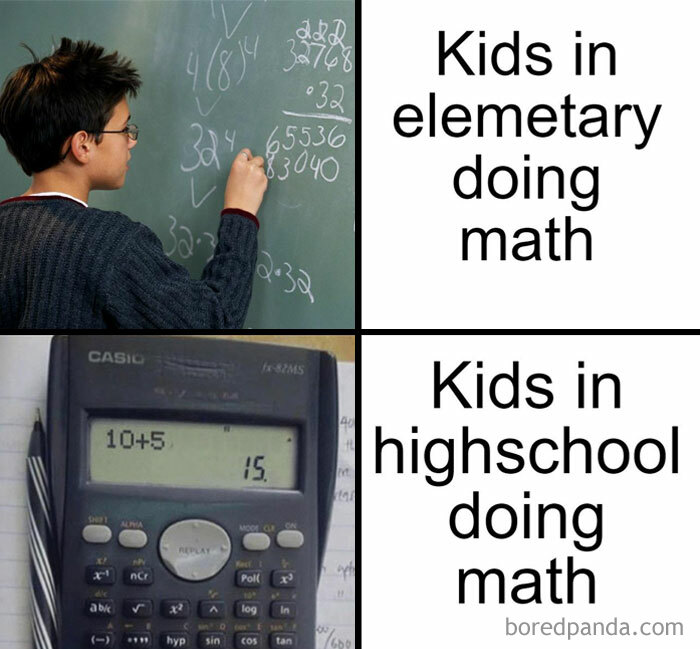
Image credits: Long_Wiwi
#19 “Find X”
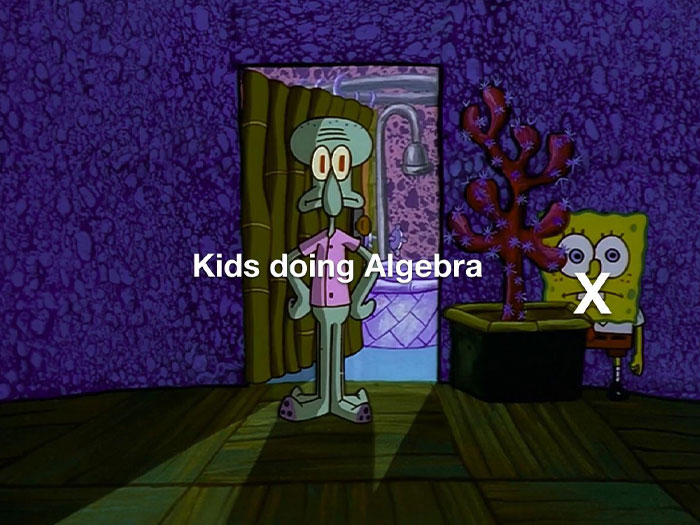
Image credits: Mans333
#20 “Finally Found the Square Root”
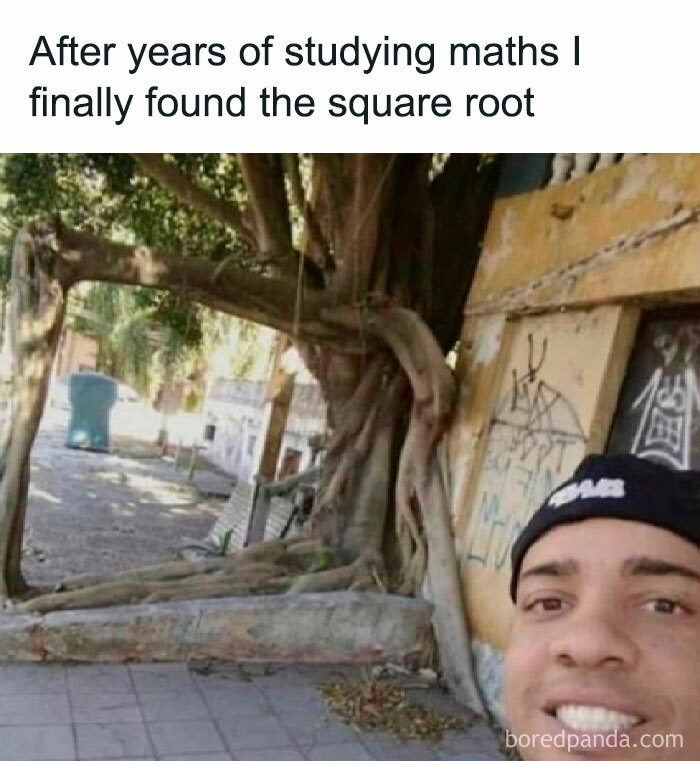
Image credits: from_brasil
#21 “I’m So Good at Math”
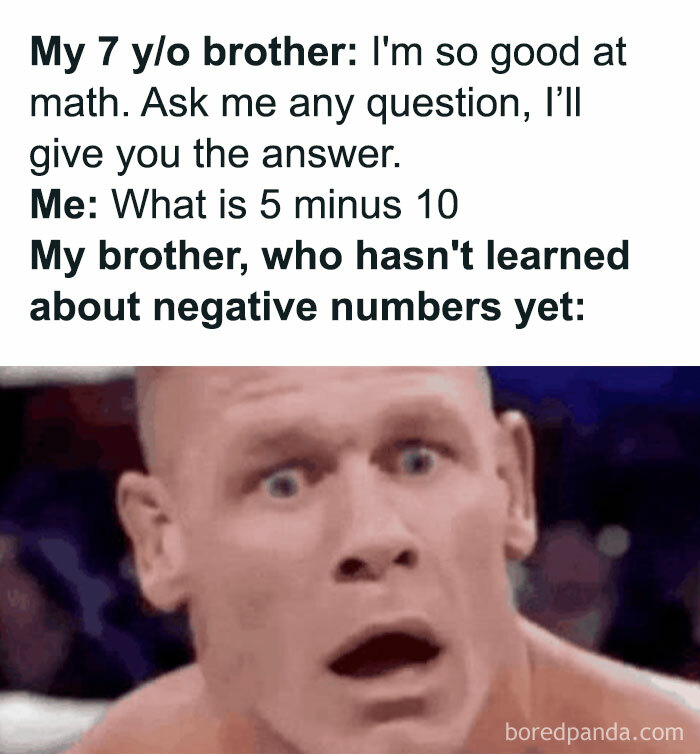
Image credits: mijuzz7
#22 The Struggle Is Real

#23 The Sad Truth
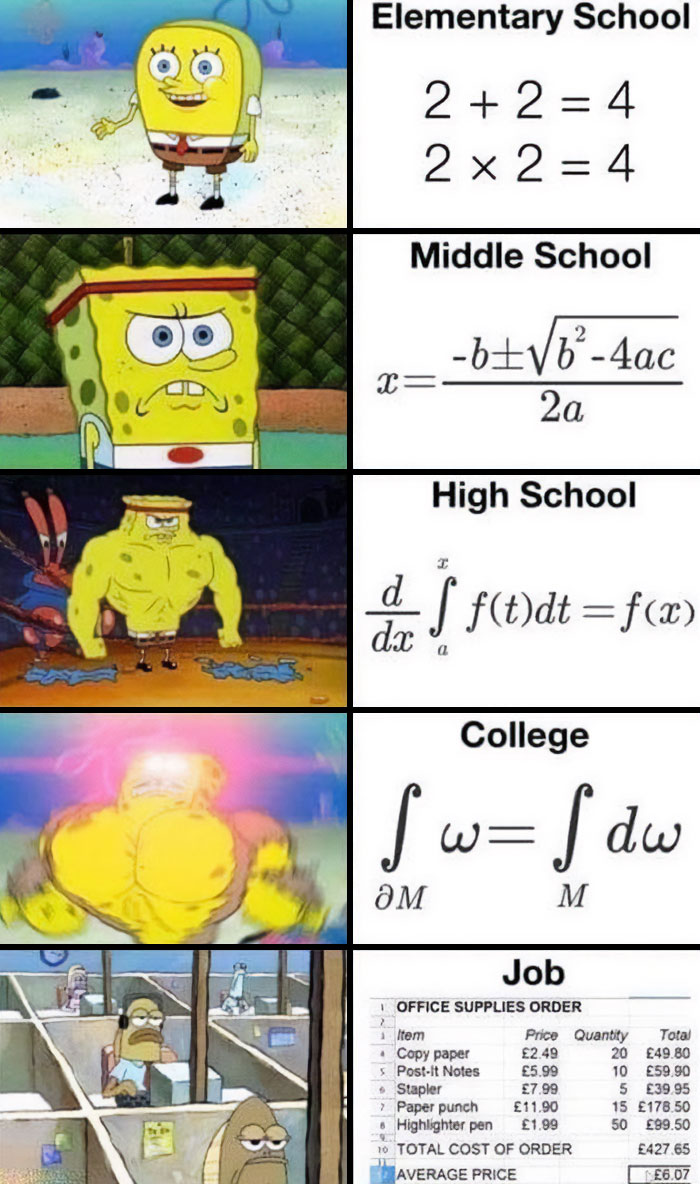
#24 Radical Shoes
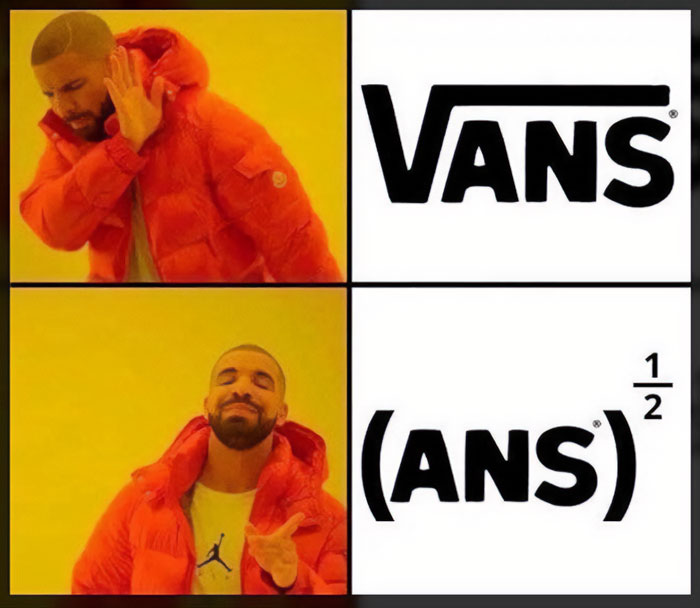
#25 No Explanation Needed
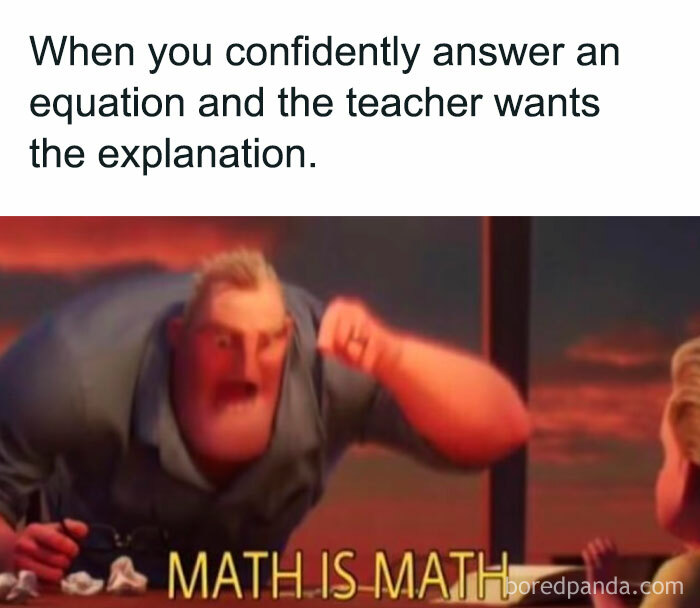
Image credits: The-Dank-Memer
#26 “Name Every Number”
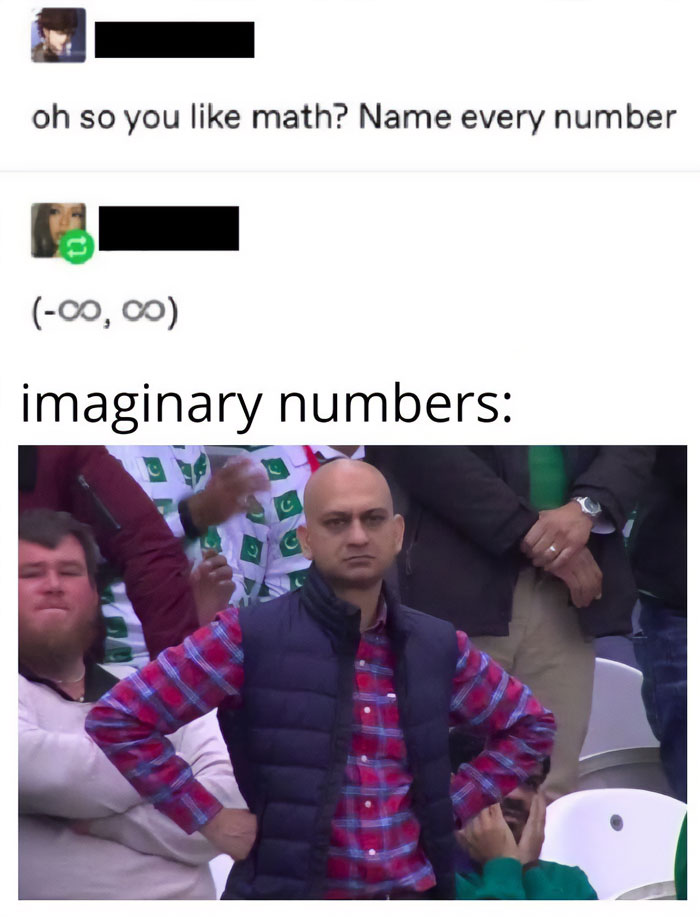
Image credits: Clonestaar
#27 “What Happened?”
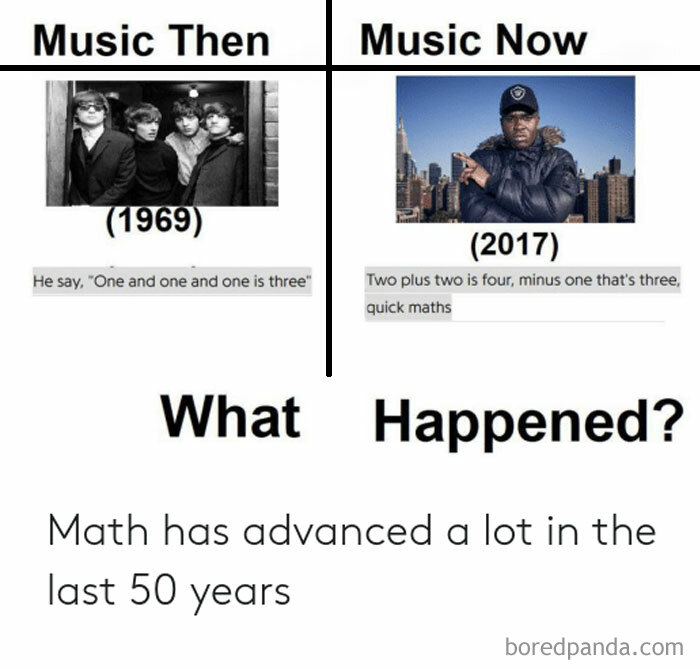
#28 “Nowhere Near Enough”
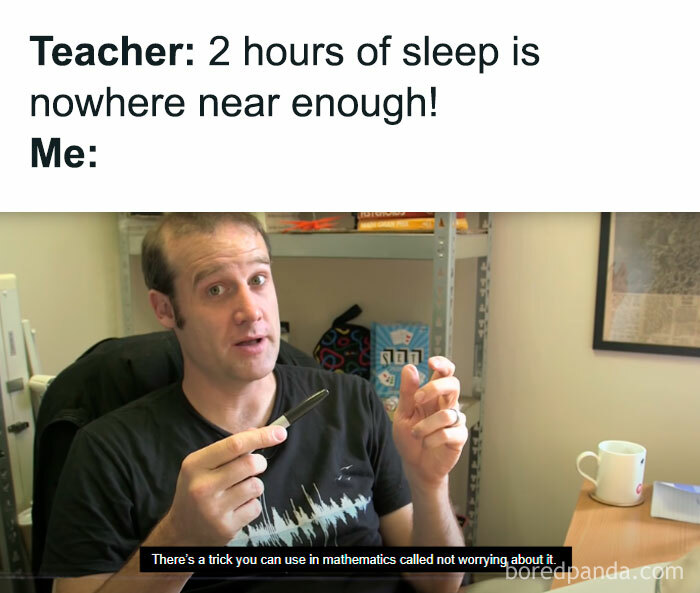
Image credits: math-memes
#29 Flexing Math Muscles
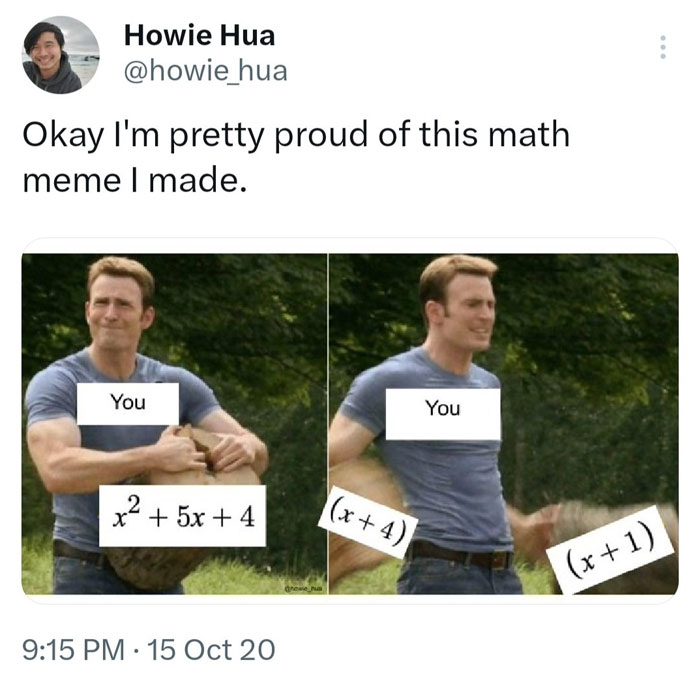
Image credits: @howie_hua
#30 God Is Omniscient
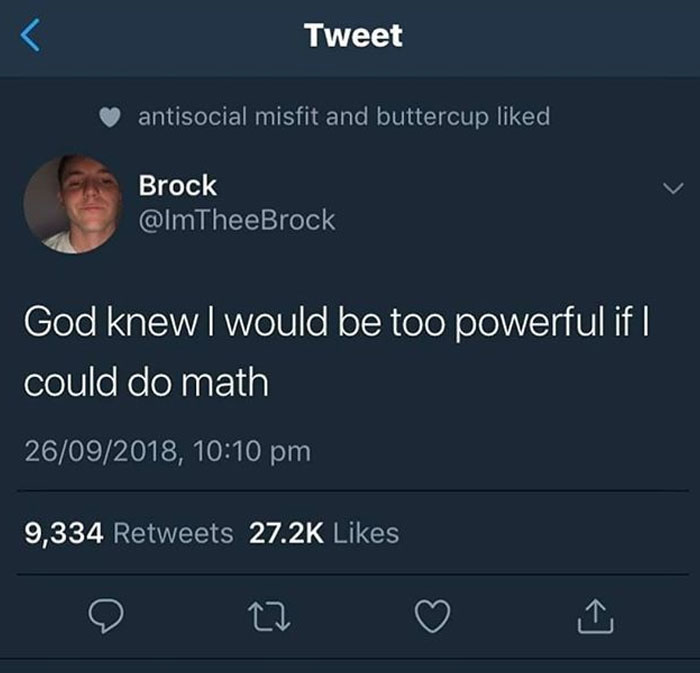
Image credits: @ginapple_
References
- “Timeline of Mathematics.” Mathigon. | https://mathigon.org/timeline
- History.com Editors. “Sumer.” History.com, December 7, 2017 | https://www.history.com/topics/ancient-middle-east/sumer
- The Editors of Encylopaedia Brittanica. “Hindu-Arabic numerals.” Brittanica, March 17, 2009 | https://www.britannica.com/topic/Hindu-Arabic-numerals/additional-info#history
- The Editors of Encylopaedia Brittanica. “Ada Lovelace.” Brittanica, March 21, 1999 |https://www.britannica.com/biography/Ada-Lovelace
- “Who was Ada Lovelace?” BBC Newsround, October 13, 2020 | https://www.bbc.co.uk/newsround/49960544
- Klein, Christopher. “10 Things You May Not Know About Ada Lovelace.” History, December 10, 2015 | https://www.history.com/news/10-things-you-may-not-know-about-ada-lovelace
- Nola Taylor Tillman, Meghan Bartels, Scott Dutfield. “What is the theory of general relativity? Understanding Einstein’s space-time revolution.” Space.com. | https://www.space.com/17661-theory-general-relativity.html
- History.com Editors. “Albert Einstein.” History, October 27, 2009 | https://www.history.com/topics/inventions/albert-einstein#section_4
- Copeland, B.J. “Alan Turing.” Brittanica, July 20, 1998 | https://www.britannica.com/biography/Alan-Turing
- The Editors of Encylopaedia Brittanica. “Turing test.” Brittanica, July 20, 1998 | https://www.britannica.com/technology/Turing-test/additional-info#history
- “Study finds ChatGPT’s latest bot behaves like humans, only better.” Stanford School of Humanities and Sciences, February 22, 2024 | https://humsci.stanford.edu/feature/study-finds-chatgpts-latest-bot-behaves-humans-only-better#:~:text=In+the+study%2C+ChatGPT’ s+version,have+won+itself+many+friends.
- Ministry of Justice and Sam Gyimah. “Thousands officially pardoned under ‘Turing’s Law’.” Gov.uk, January 31, 2017 | https://www.gov.uk/government/news/thousands-officially-pardoned-under-turings-law#:~:text=’ Turing’s+law’+has+been+a,Majesty+the+Queen+in+2013.
- Holland, Brynn. “Human Computers: The Early Women of NASA.” History.com, December 13, 2016 | https://www.history.com/news/human-computers-women-at-nasa
- Joanna Stauss and Emily Staniforth. “Katherine Johnson: Pioneering NASA mathematician.” Space.com, November 11, 2022 | https://www.space.com/katherine-johnson.html#:~:text=Katherine+Johnson+was+a+NASA,to+the+moon+and+back.
- T.C. Scott and P. Marketos. “On the origin of the Fibonacci Sequence.” March 2014 | https://www.researchgate.net/publication/280223479_On_the_Origin_of_the_Fibonacci_sequence
- Dr. Alessandro Soranzo et al. “Four ways in which Leonardo da Vinci was ahead of his time.” The Conversation, May 1, 2019 | https://theconversation.com/four-ways-in-which-leonardo-da-vinci-was-ahead-of-his-time-115338
- “Bridges Mathematics and the Arts.” The Bridges Organization. | https://www.bridgesmathart.org
from Bored Panda https://ift.tt/lgwphJ1
via IFTTT source site : boredpanda